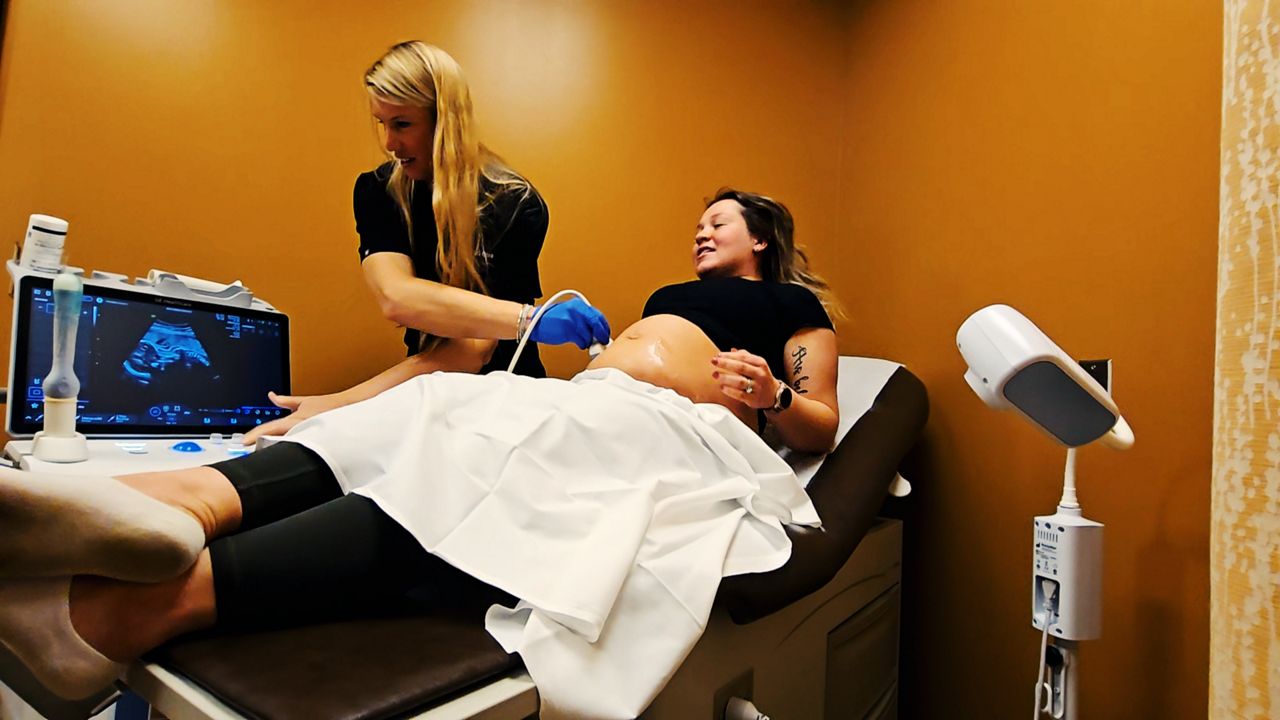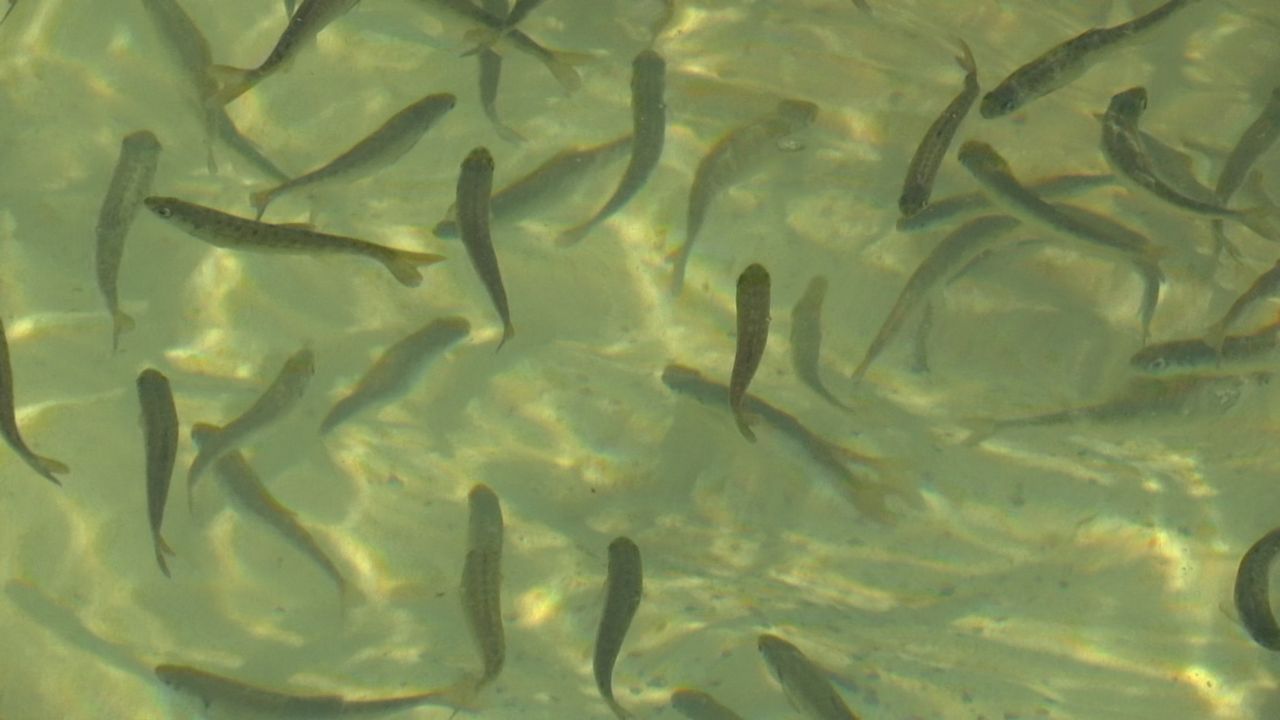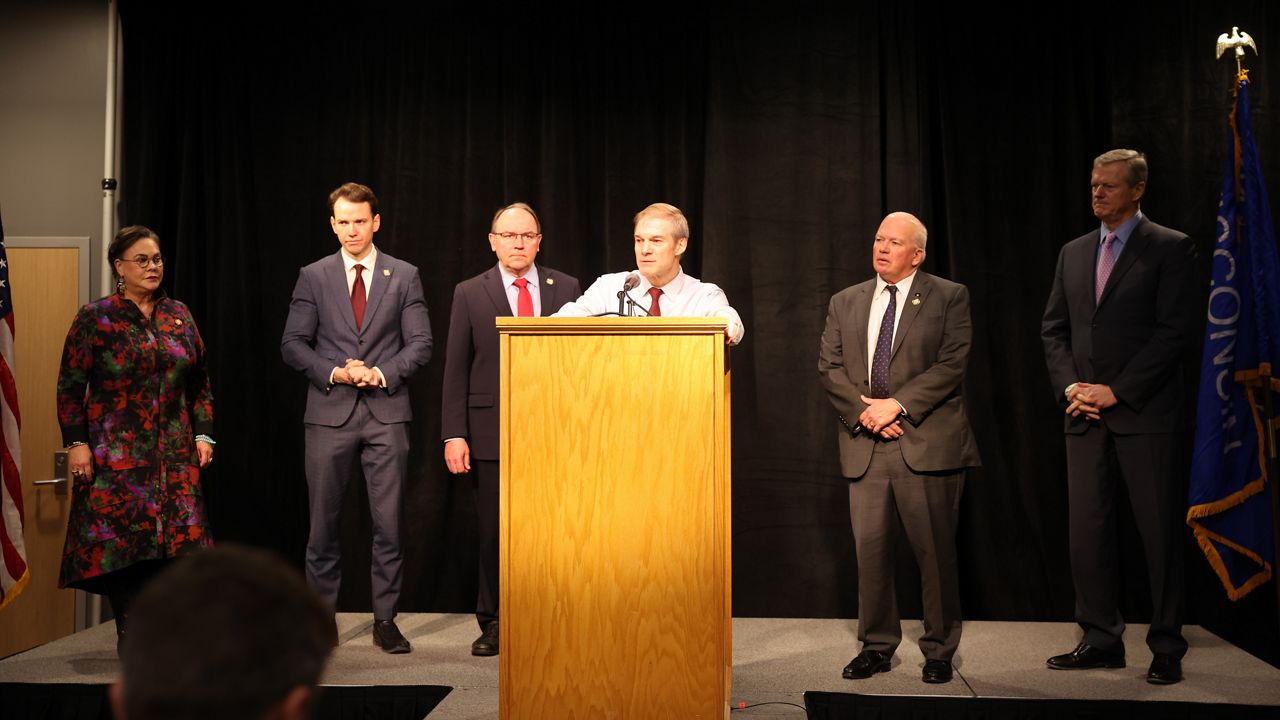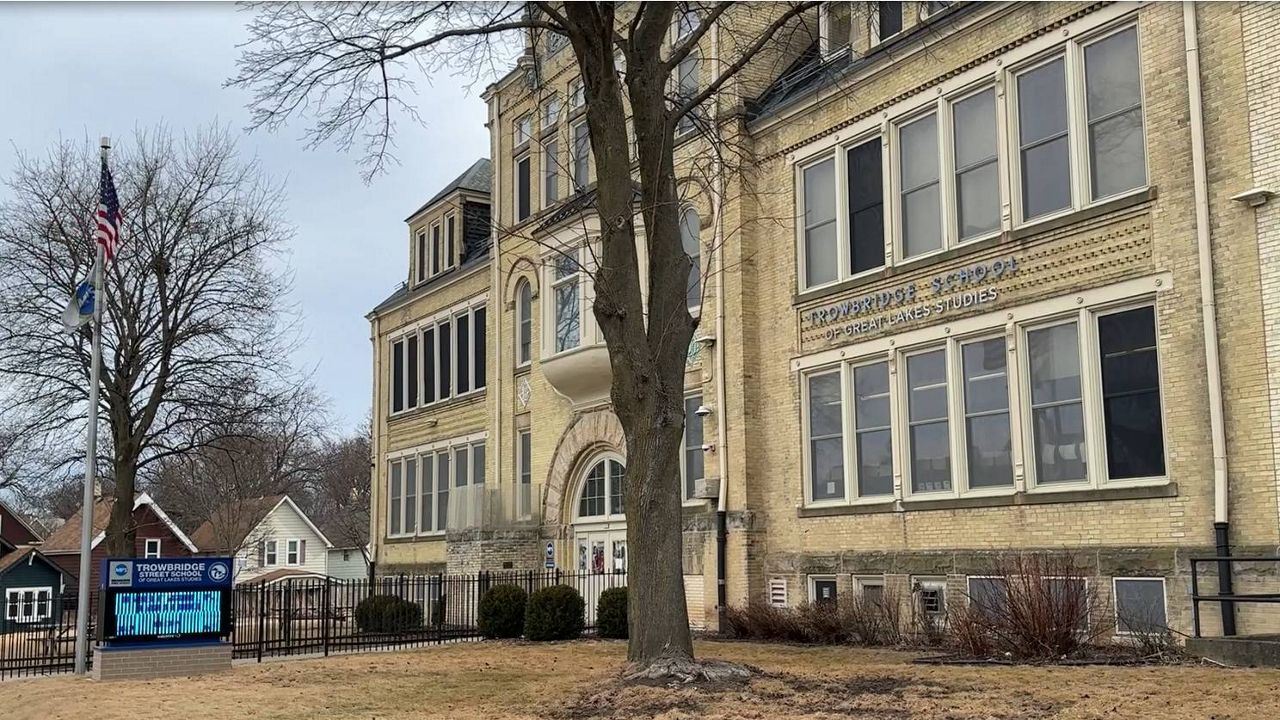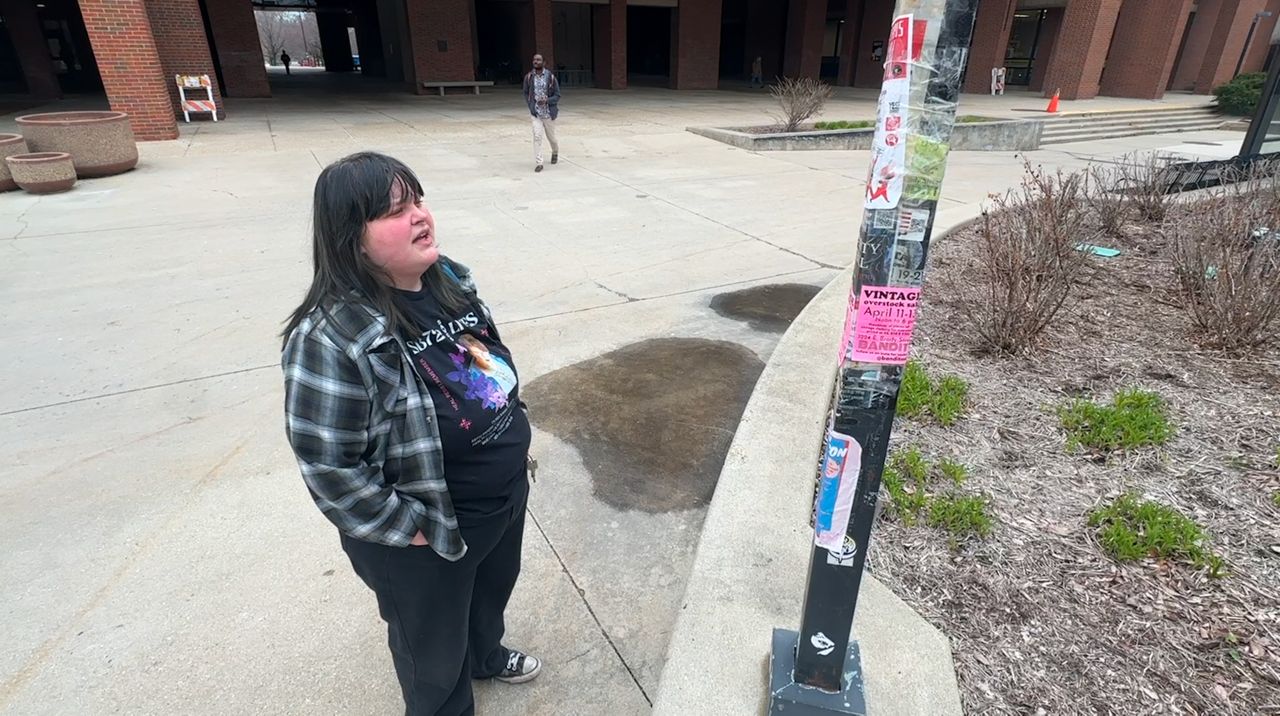OUTAGAMIE COUNTY, Wis. — About 40 minutes west of Green Bay, Angelo Cozzola, a Wisconsin Department of Natural Resources (DNR) fisheries biologist, and his crew recently took a boat ride up the winding Wolf River to catch some walleye.
“Alright, you’re going on,” warned Cozzola.
Instead of a rod and reel, he flipped on the boat’s generator
“We’ll pull power from the generator and then essentially distribute the electricity into the water with those two metal booms up front,” explained Cozzola.
The electric pulse extends to a roughly 6- to 8-foot radius in front of the boat. Two crew mates stand at the bow, hold long nets, ready to jump into action.
“That electrical field will temporally stun the fish, basically making it immobilized so that we can net it. We’ll then toss it in our well maintained live well,” said Cozzola.
They targeted low marshy areas where the walleye tend to spawn.
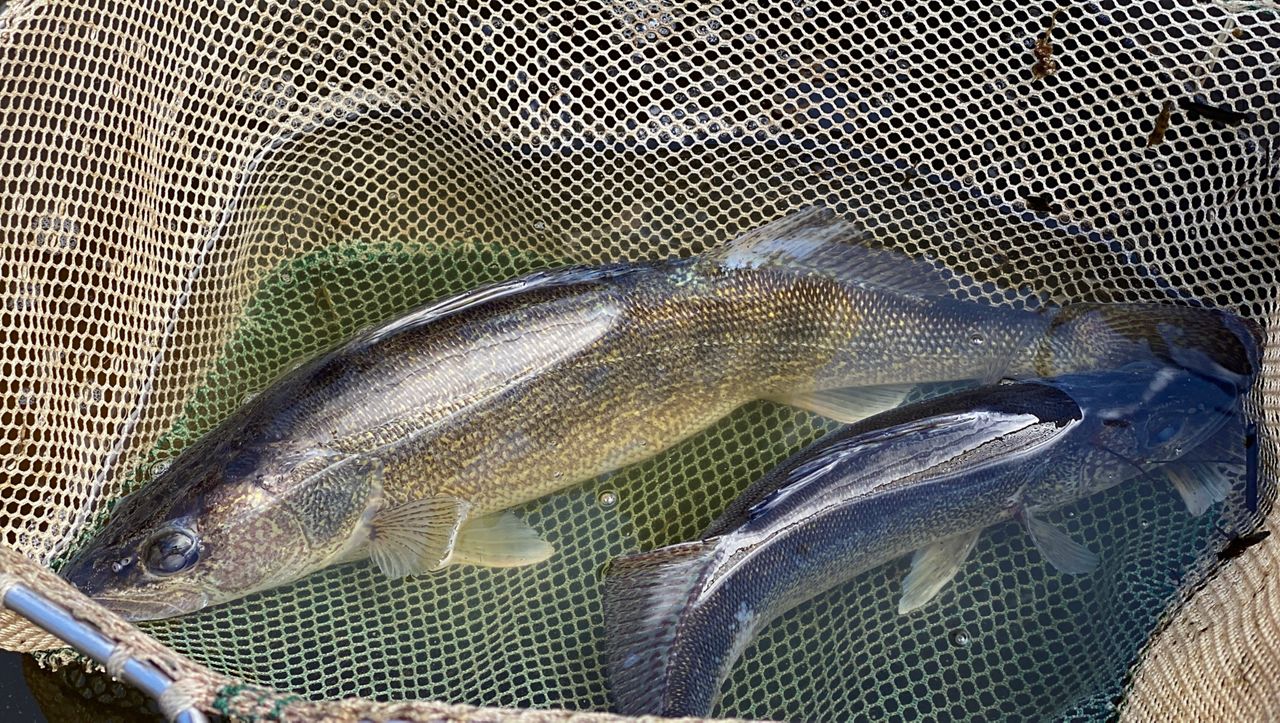
“The goal for the survey is to tag 1,000 individual female fish; on the way to the 1,000 females, we’ll typically handle between two and three thousand males,” said Cozzola.
Cozzola welcomes volunteers. This particular day, Walleyes for Tomorrow President Tom Walters came along to help net the fish.
“It’s fairly strenuous. By the end of the day, we’ll be dragging,” said Walters.
The specialized shock boat was donated by Walleyes for Tomorrow to the DNR in 1994. The groups work together to protect the valuable walleye resource.
“I get to know these guys. They usually will give us a lot of information here because we run fish hatcheries. It’s a learning experience,” explained Walters.
In a few hours, the team pulled in 68 walleye. Then the real work began. Walters started netting fish from the boats live well, and Cozzola would grab a fish and take measurements.
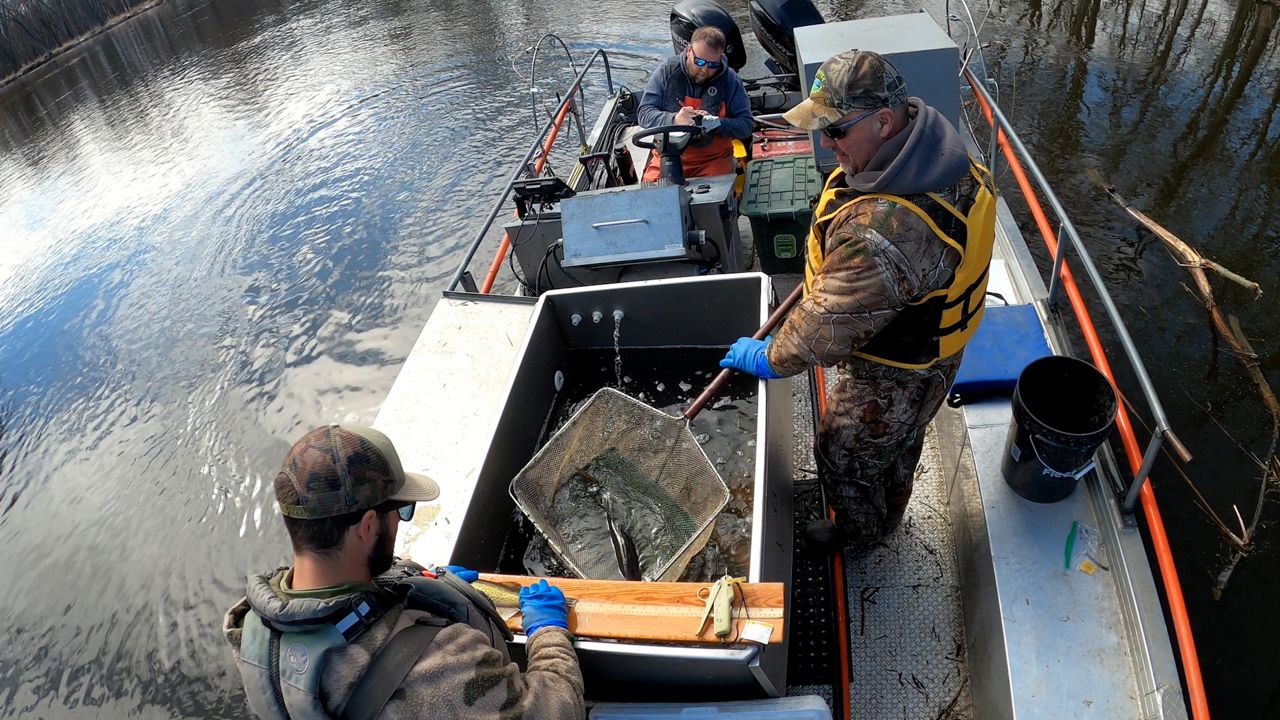
“Kind of all your basic biometrics you use to keep tabs on the population and then another really big part of this survey is our tagging efforts. We put tags in anywhere from three to five thousand walleye a year. It kind of helps us keep tabs on how the anglers are doing and how many fish are being harvested,” said Cozzola.
Cozzola said if an angler were to find a tagged fish on the Winnebago or any other Wisconsin water body, they could use this website to help the DNR track fish populations.
“We will actually use the number of angler tags we get back to calculate exploitation on an annual basis. Kind of helps us keep tabs on how the anglers are doing and how many fish are being harvested,” said Cozzola.
The 68 walleye taken by Cozzola and crew were returned safely to the river, where Wisconsin anglers have a chance to net them in a more traditional manner.






